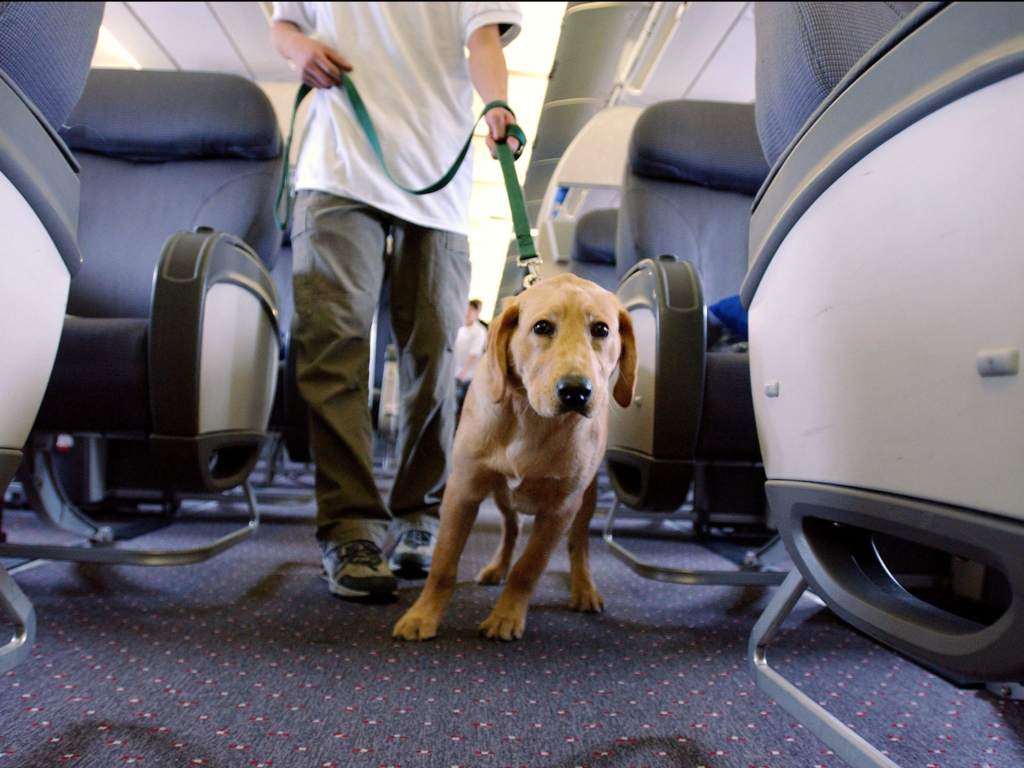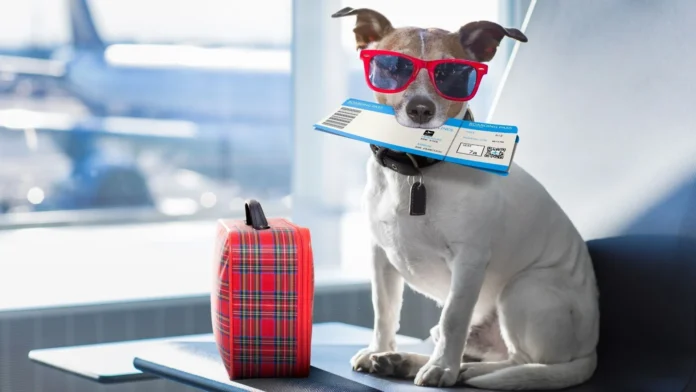In today’s world, pets are considered an integral member of the family, and many pet owners love to include their furry companions on their travel adventures. Whether it’s a weekend flight or a cross-country road trip, traveling with a fuse requires careful planning and consideration to ensure their safety, comfort and well-being throughout the journey. In this composition, we’ll discover five essential tips for getting up to speed with your fuse, making your peregrination enjoyable and stress-free for both you and your beloved musketeers.
1: Plan Ahead
Research Pet Accommodation Facilities:
- Before you head out, research pet-friendly accommodations that suit your purpose. Find inns, inns, rentals, or campsites that invite pets.
- Check for any restrictions, such as size or breed restrictions, and ask about additional costs or requirements for bringing a pet.
- Use other pet audits to learn about facilities’ pet policies and offices.
Verify Transportation Options:
- Determine the best method of transportation for your pet, whether it’s by car, plane, train, or some other strategy.
- If flying, research pet policies and regulations for different airlines. Some airlines have specific requirements regarding pet carriers, documentation, and fees.
- If traveling by car, plan your route and identify pet-friendly rest stops along the way for bathroom breaks and exercise.
Consider Your Pet’s Comfort and Safety:
- Consider your pet’s temperament, health and obvious needs when arranging outings. Consider factors such as environment, practices, and facilities.
- On the off chance that your pet is prone to stress or motion sickness, talk to your veterinarian about possible treatments or medications to help reduce anxiety during movement.
- Plan for any unusual amenities that your pet may need, for example, a quiet place to retreat to or access to recognizable sheet material or toys.
2: Prepare a Travel Kit

- Food and Water: Pack enough of your pet’s normal nourishment however long your excursion, in addition to some extra if there should arise an occurrence of deferrals might last. Bring along folding food and water bowls for simple taking care of and hydration in a hurry.
- Medications: If your pet takes any medications or supplements, be sure to pack an adequate supply. Keep recipes in their unique sections, and include any necessary instructions or dosage data.
- Comfort Items: Include items that provide comfort and familiarity for your pet, such as a favorite blanket, bed, or piece of clothing that carries your scent. These items can help ease anxiety and make your pet feel more secure while traveling.
- Prepping Supplies: Pack preparing supplies, for example, a brush or brush to keep your pet’s jacket clean and liberated from tangles. Contingent upon your pet’s preparing needs, you may likewise need to incorporate nail trimmers, ear wipes, or dental consideration items.
- Emergency Supplies: Include a basic first aid kit for your pet, containing items such as bandages, antiseptic wipes, and tweezers for removing ticks or splinters. Familiarize yourself with how to use these items in case of minor injuries or emergencies.
3: Practice Safe Traveling
Safety should always be the first concern when traveling with pets. Use proper transporters, clothing or safety belts to secure your pet during transport, whether you’re going by car, plane or train. Enjoy constant maintenance for exercise, bathroom breaks, and hydration to keep your pet fit and happy. Never leave your pet in the left vehicle, especially in bad weather conditions, as this can be dangerous or dangerous.
4: Maintain Routine and Comfort
- Keeping a Custom Timetable: Pets are predictable animals, and thrive on a schedule, especially around dinnertime. While on a cruise, try to care for your pet as you would at home. This consistency helps them feel great and safe, because they probably know what’s in store.
- Stick to Work-out Schedules: Very much like people, pets need normal activity to remain solid and blissful. Whether it’s an everyday walk, recess in the recreation area, or a round of get, attempt to keep up with your pet’s work-out daily schedule however much as could reasonably be expected while voyaging. Active work keeps them in great shape as well as lightens pressure and fatigue.
- Limit stressful situations: Traveling can be stressful for pets, so try to limit their exposure to unpleasant enhancements whenever conditions allow. This may mean staying away from crowded places or stressful situations that can overwhelm your pet. Also, be aware of your pet’s mood and change your schedule accordingly to ensure they feel nice and relaxed during outings.
- Give comfort and warmth: Ultimately, don’t underestimate the power of comfort and friendship. Invest quality energy with your pet, helping them feel loved and secure by offering lots of adoration, snuggling and consideration. Your presence and friendliness can go a long way in calming their nerves and making the moving experience more enjoyable for both of you.
5: Be Prepared for Emergencies

- Pack a Pet First Aid Kit: Like most people, pets can experience minor injuries or illnesses while traveling. Pack a pet emergency treatment unit with basic supplies such as soothers, bandages, antiseptic wipes, tweezers, a computerized thermometer, and any medications your pet may need. Additionally, include items tailored to your pet’s needs, such as gags for canines or nail clippers for cats.
- Know Your Pet’s Health History: Familiarize yourself with your pet’s medical history, including any pre-existing conditions, allergies, or medications they are taking. This information will be valuable in case of an emergency, as it can help veterinarians make informed decisions about your pet’s care.
- Consider Pet Insurance: Consider investing in pet insurance to help cover the costs of unexpected medical expenses while traveling. Pet insurance policies typically provide coverage for accidents, illnesses, and emergency veterinary care, giving you peace of mind knowing that your pet’s medical needs are financially protected.
- Practice Preventive Measures: Take preventive measures to reduce the risk of emergencies while traveling with your pet. This includes keeping them on a leash or harness at all times, ensuring they are properly secured in a carrier or crate during transportation, and avoiding potentially dangerous situations or environments.
- Research Veterinary Services: Before embarking on your trip, research veterinary clinics, animal hospitals, or emergency pet care facilities along your route and at your destination. Make a list of contact information and addresses so that you know where to turn in case of a medical emergency involving your pet.
Conclusion:
Going with pets can be a compensating experience, permitting you to make enduring recollections with your shaggy sidekicks. By following these five fundamental tips – preparing, setting up a movement unit, rehearsing safe voyaging, keeping up with routine and solace, and being ready for crises – you can guarantee a smooth and pleasant excursion for both you and your pets. So gather your sacks, rope up your shaggy companions, and set out on your next experience together!



